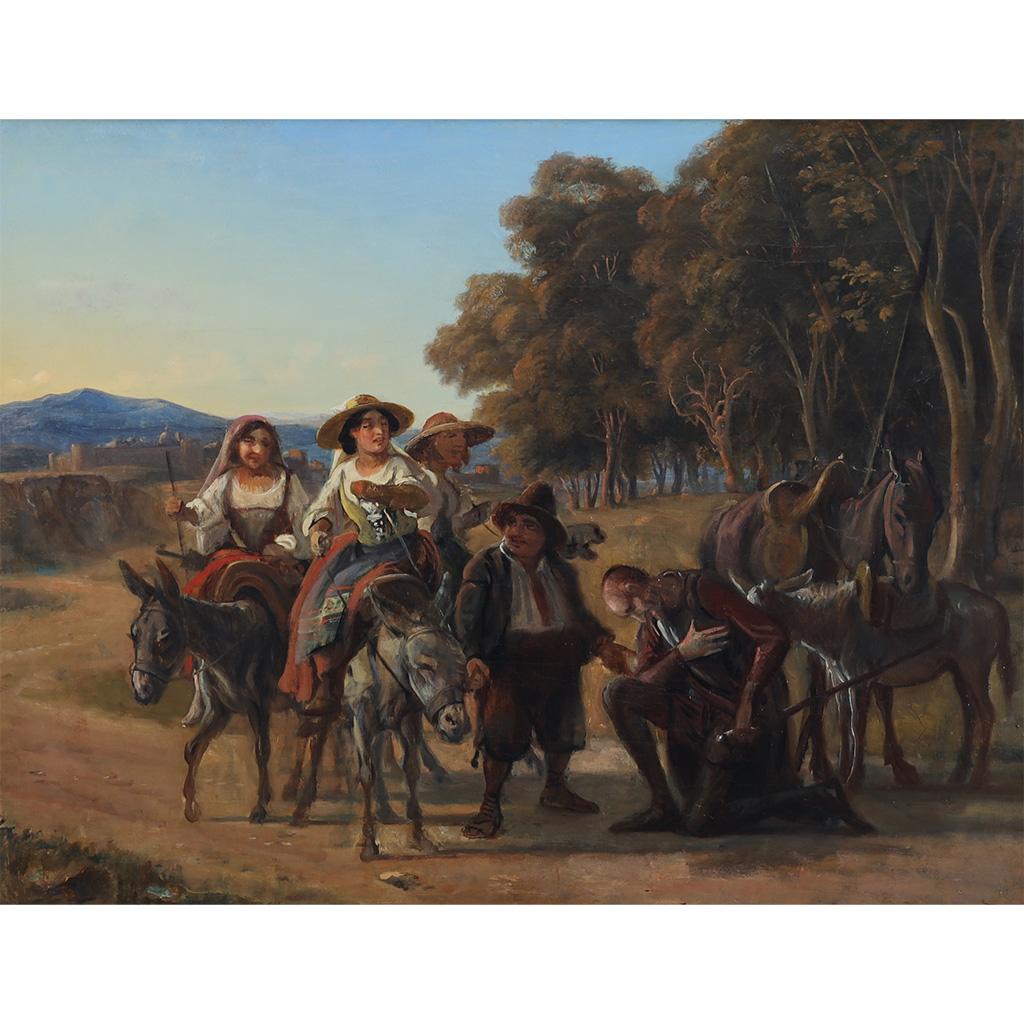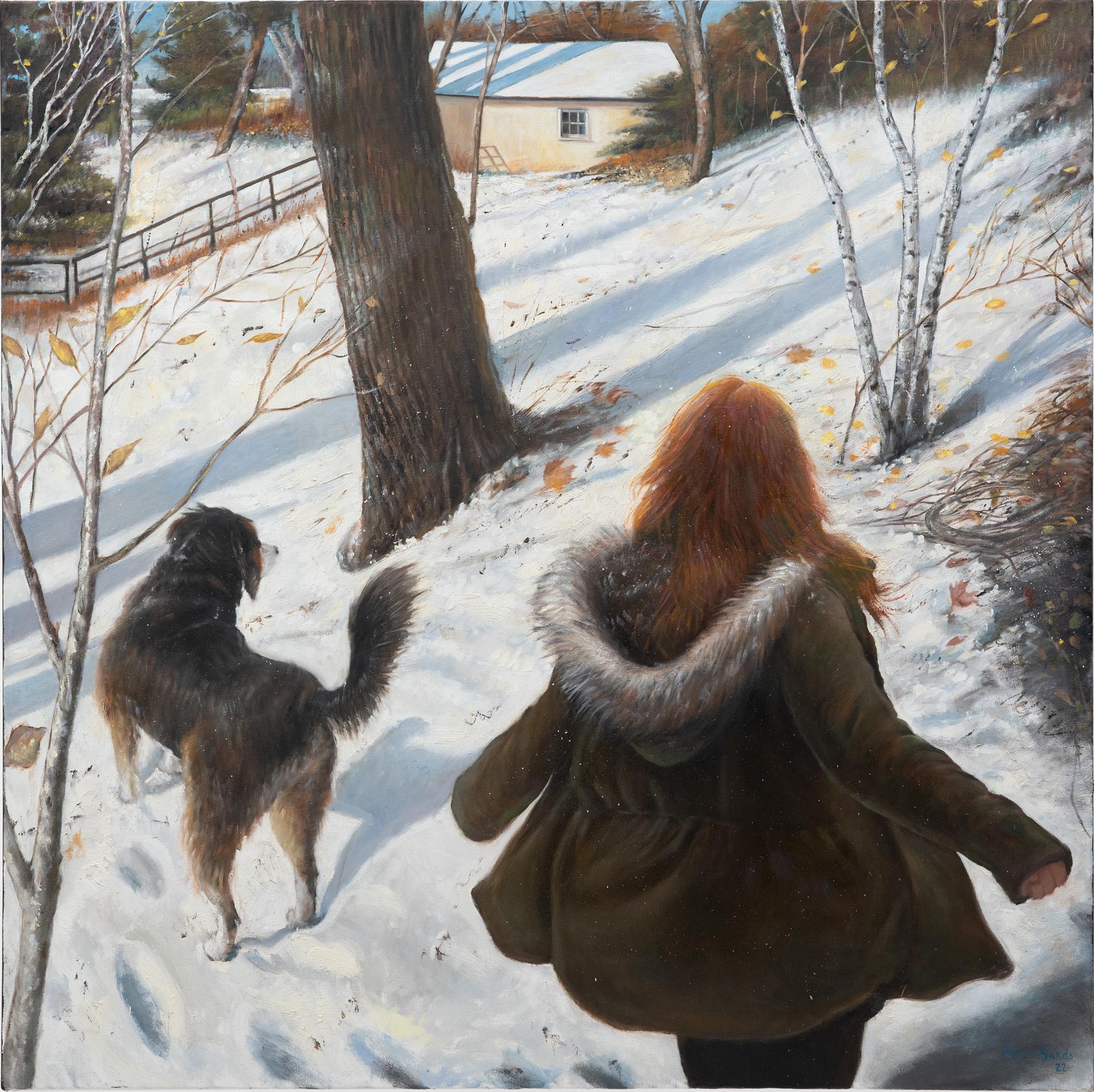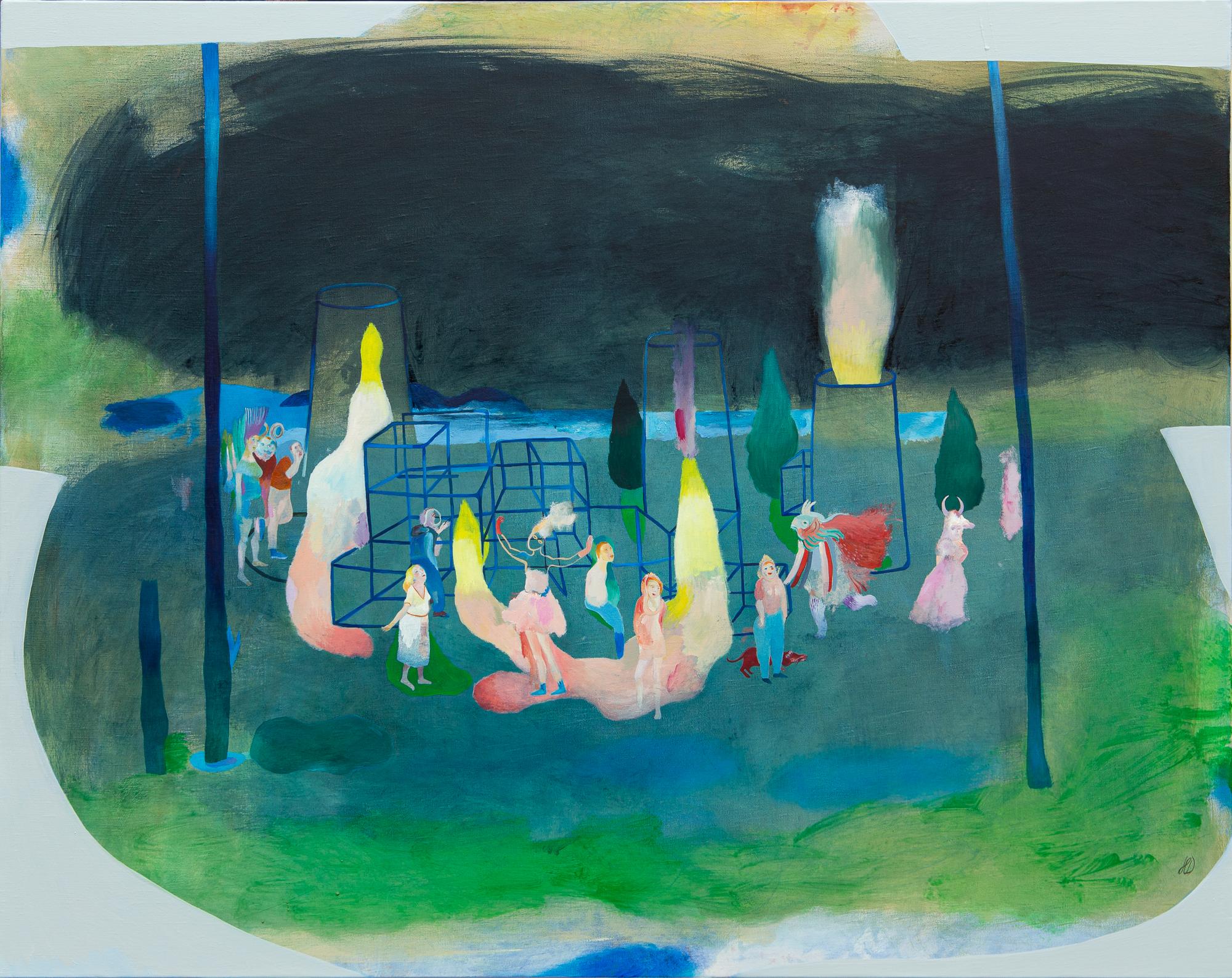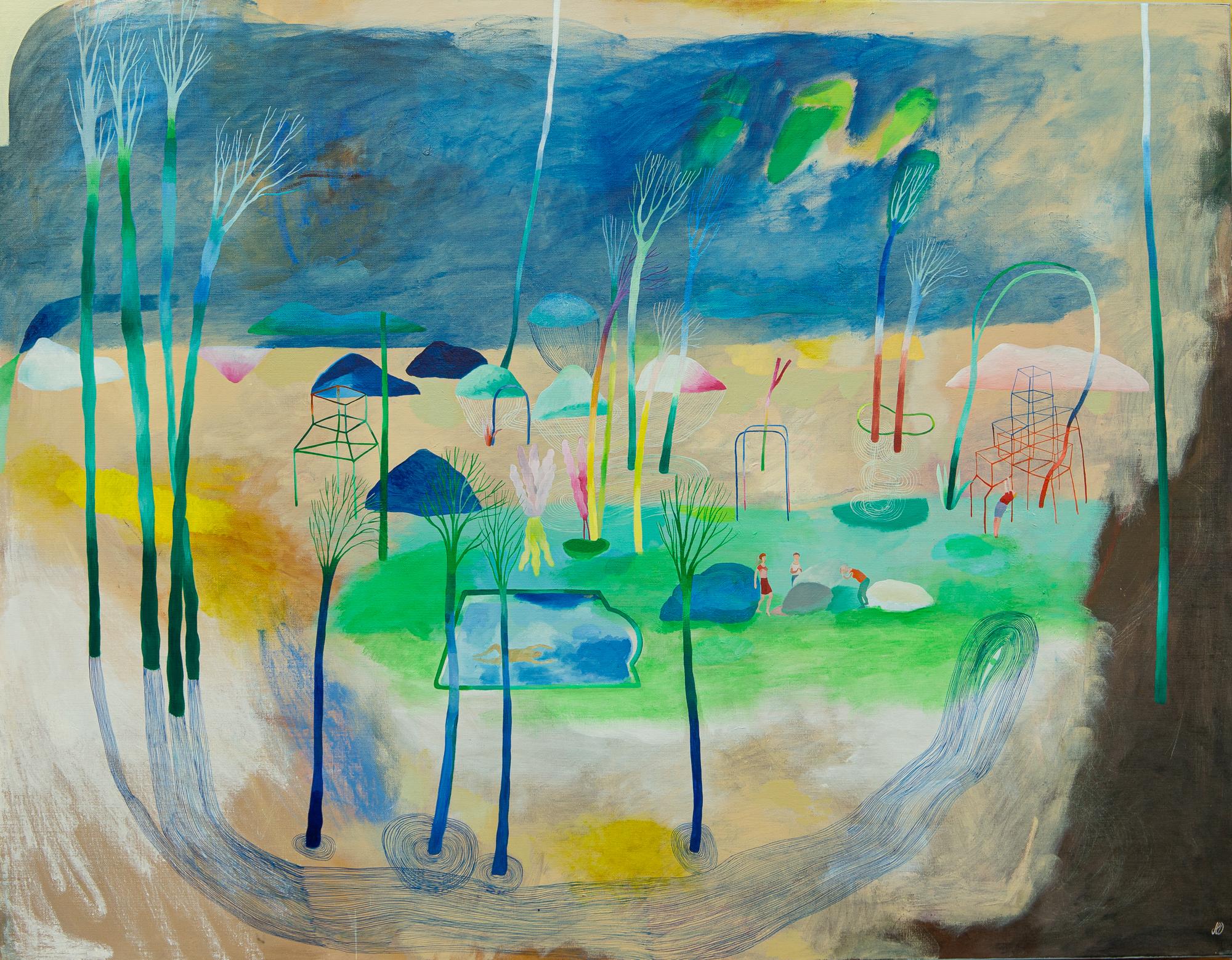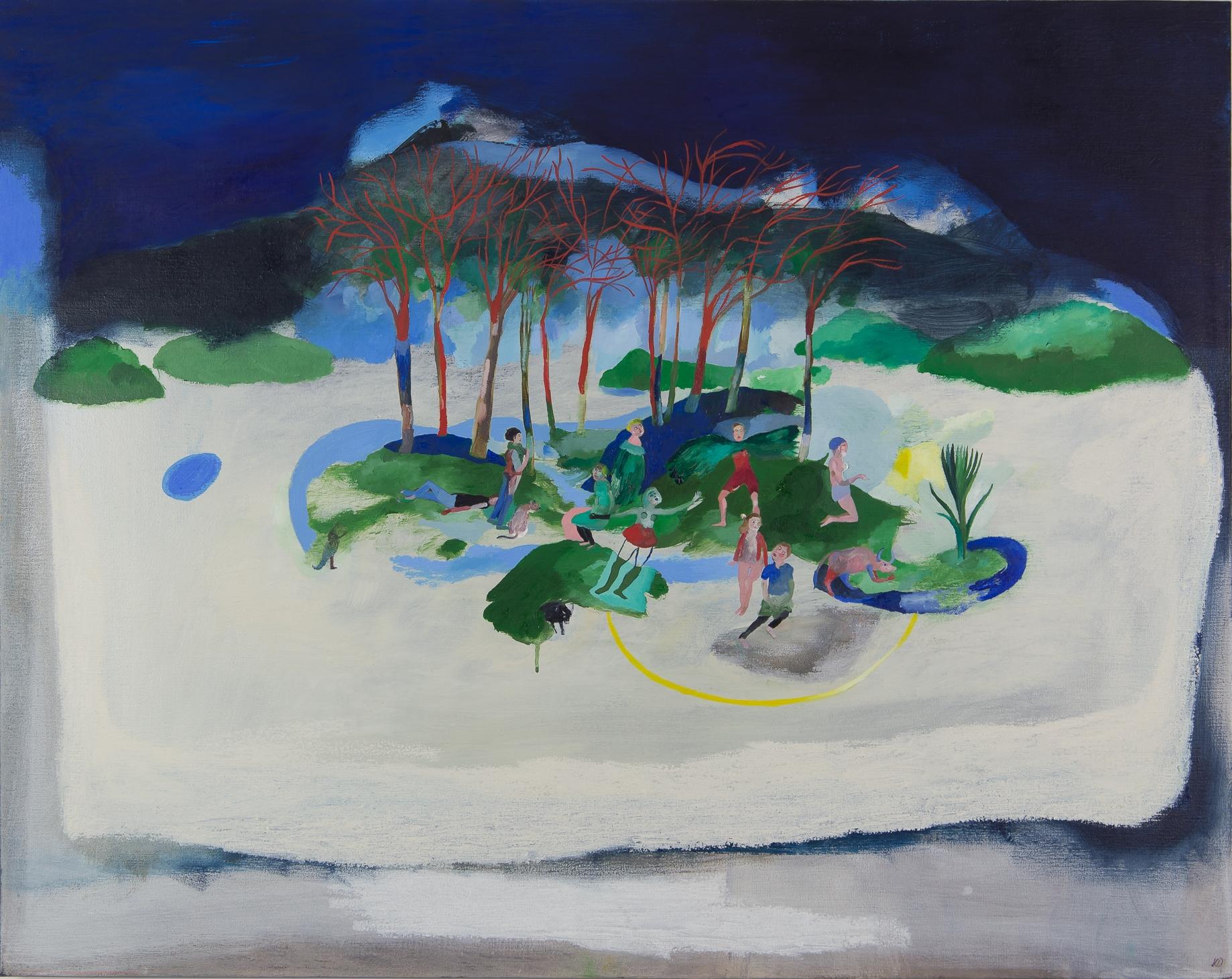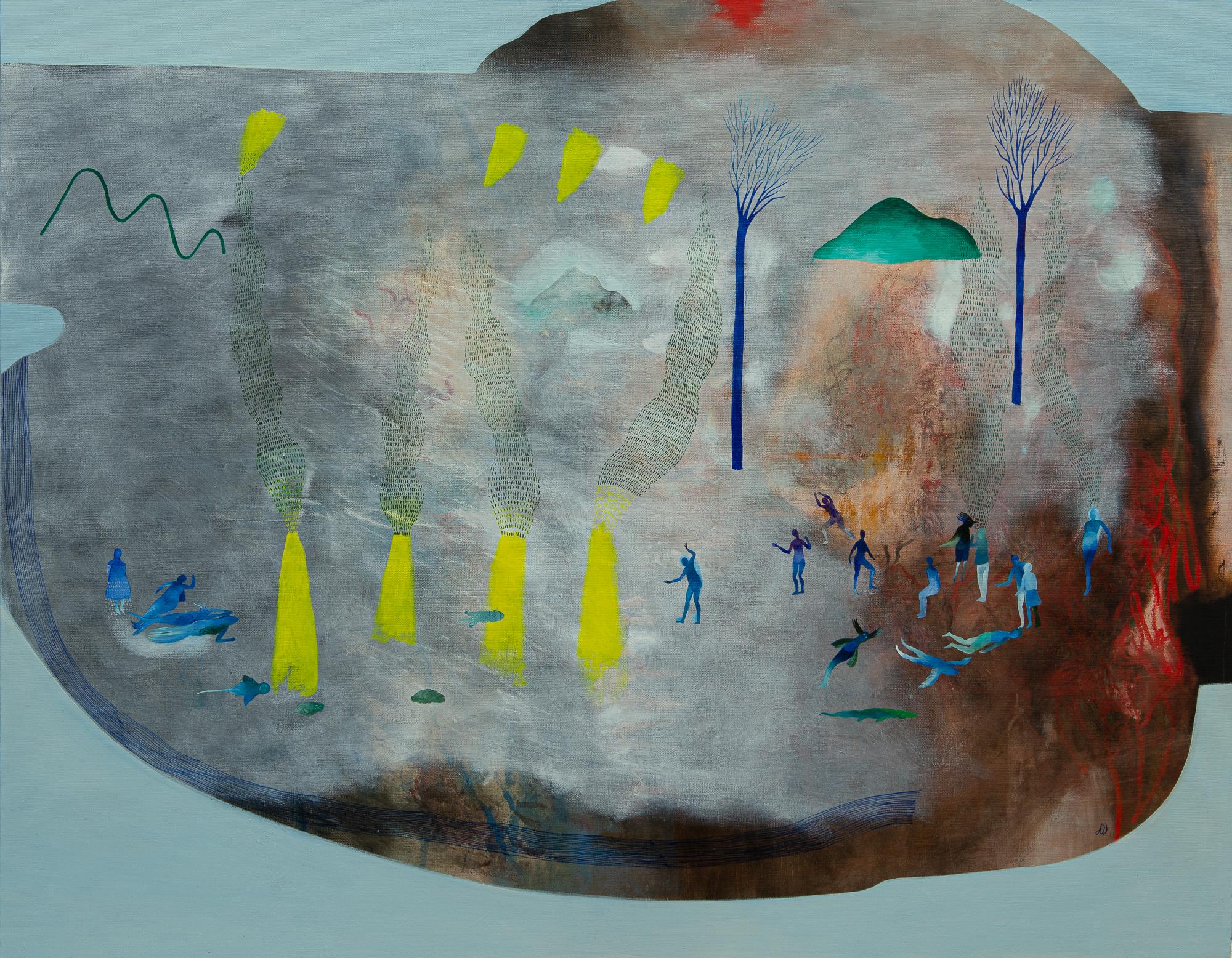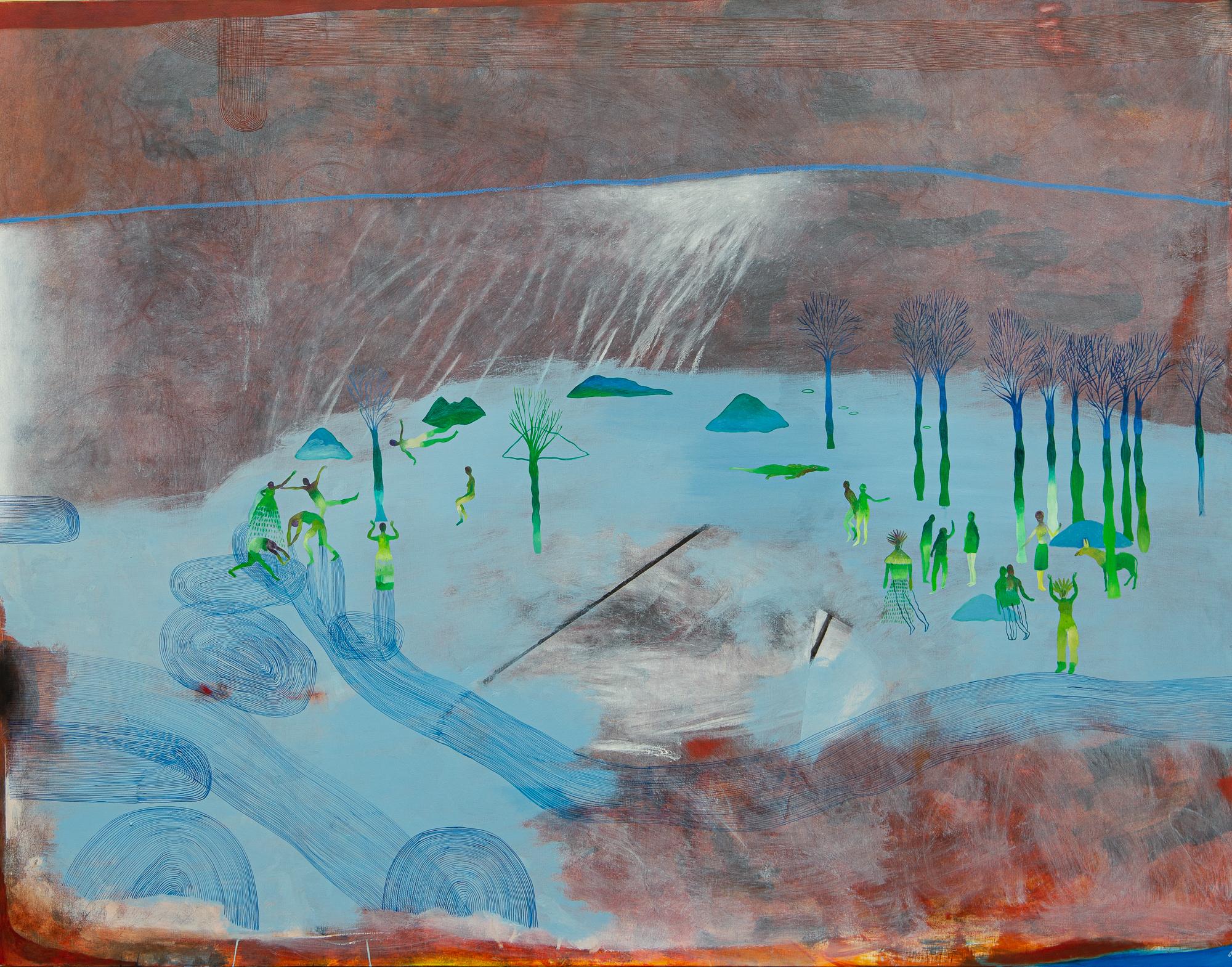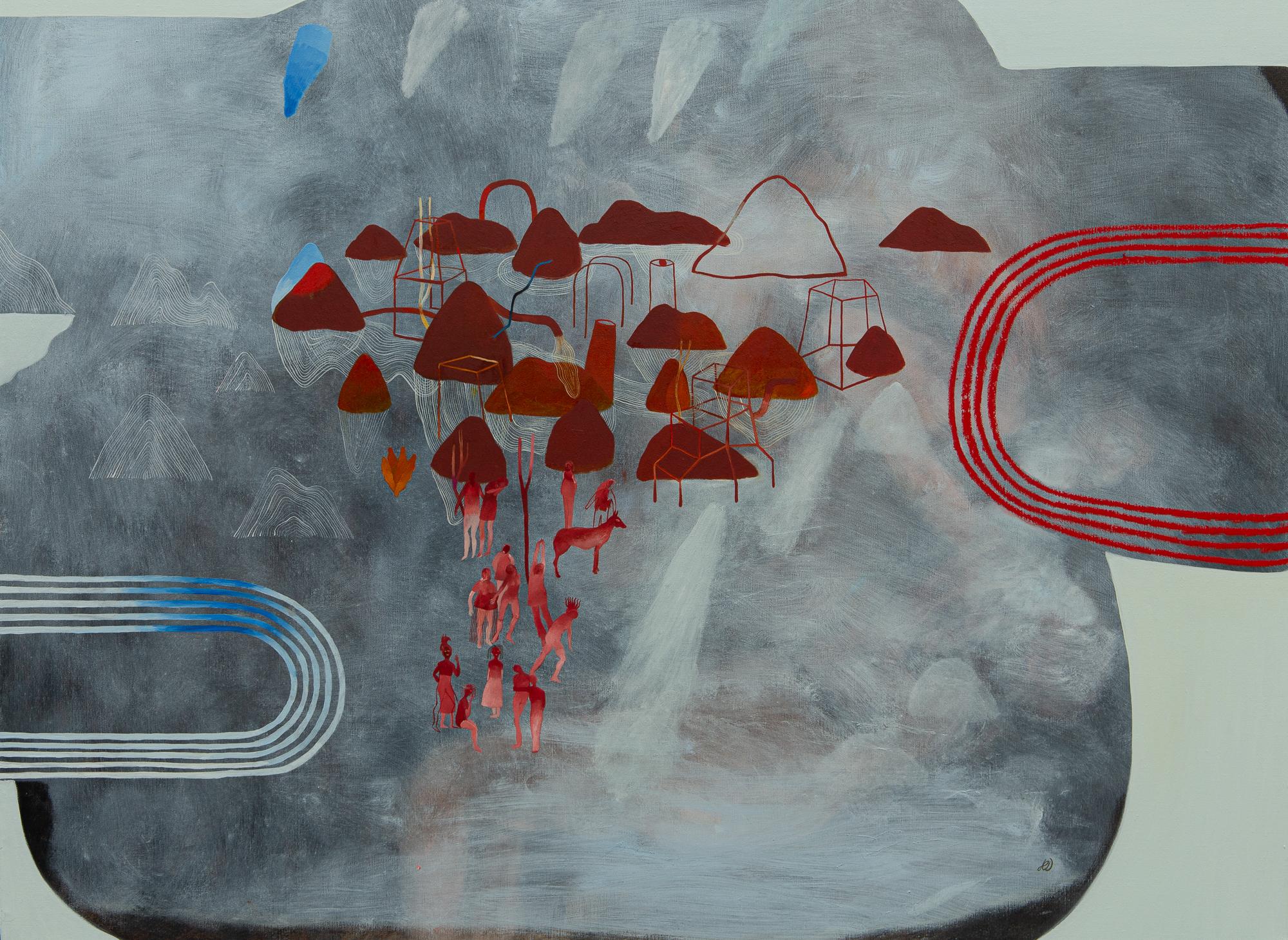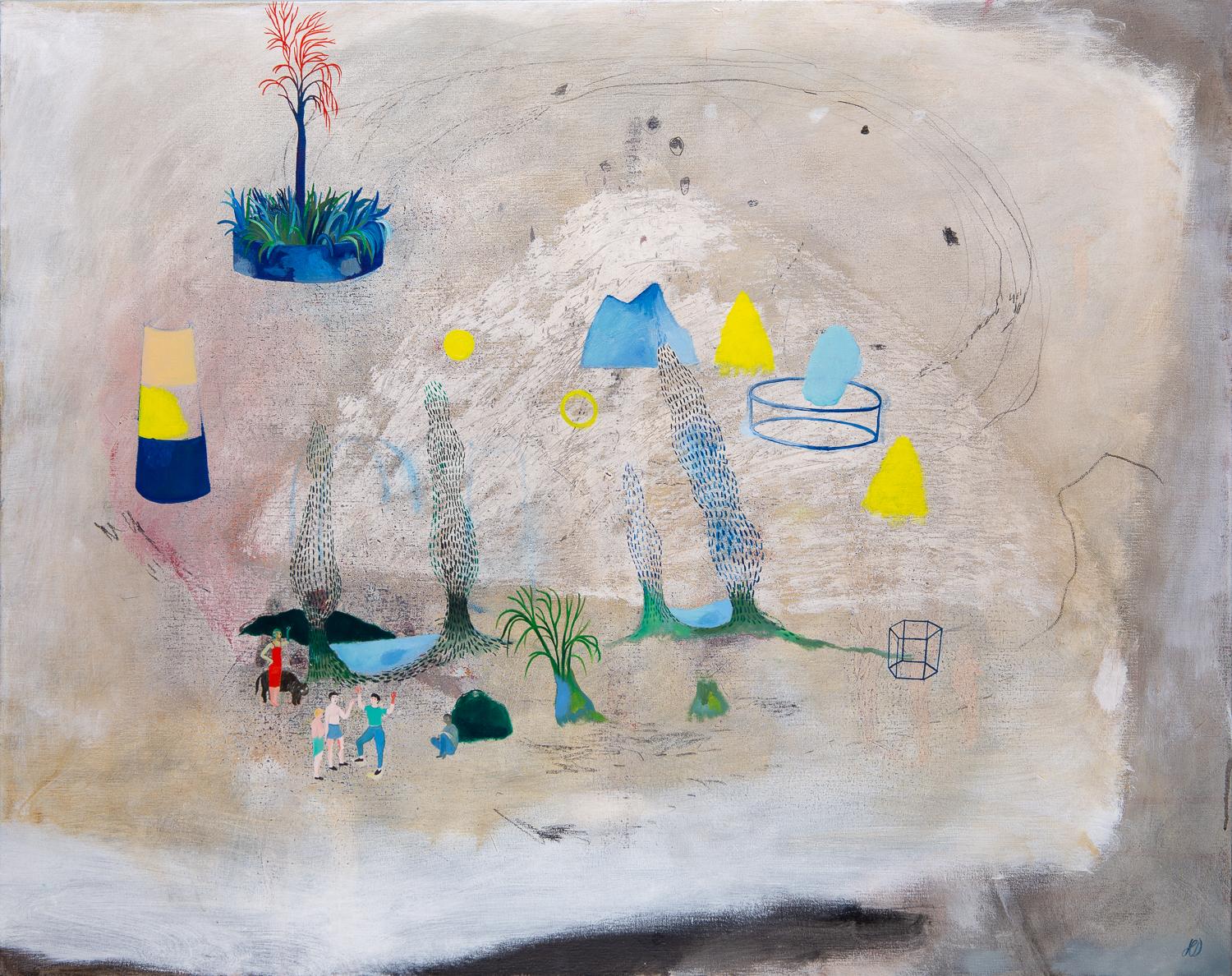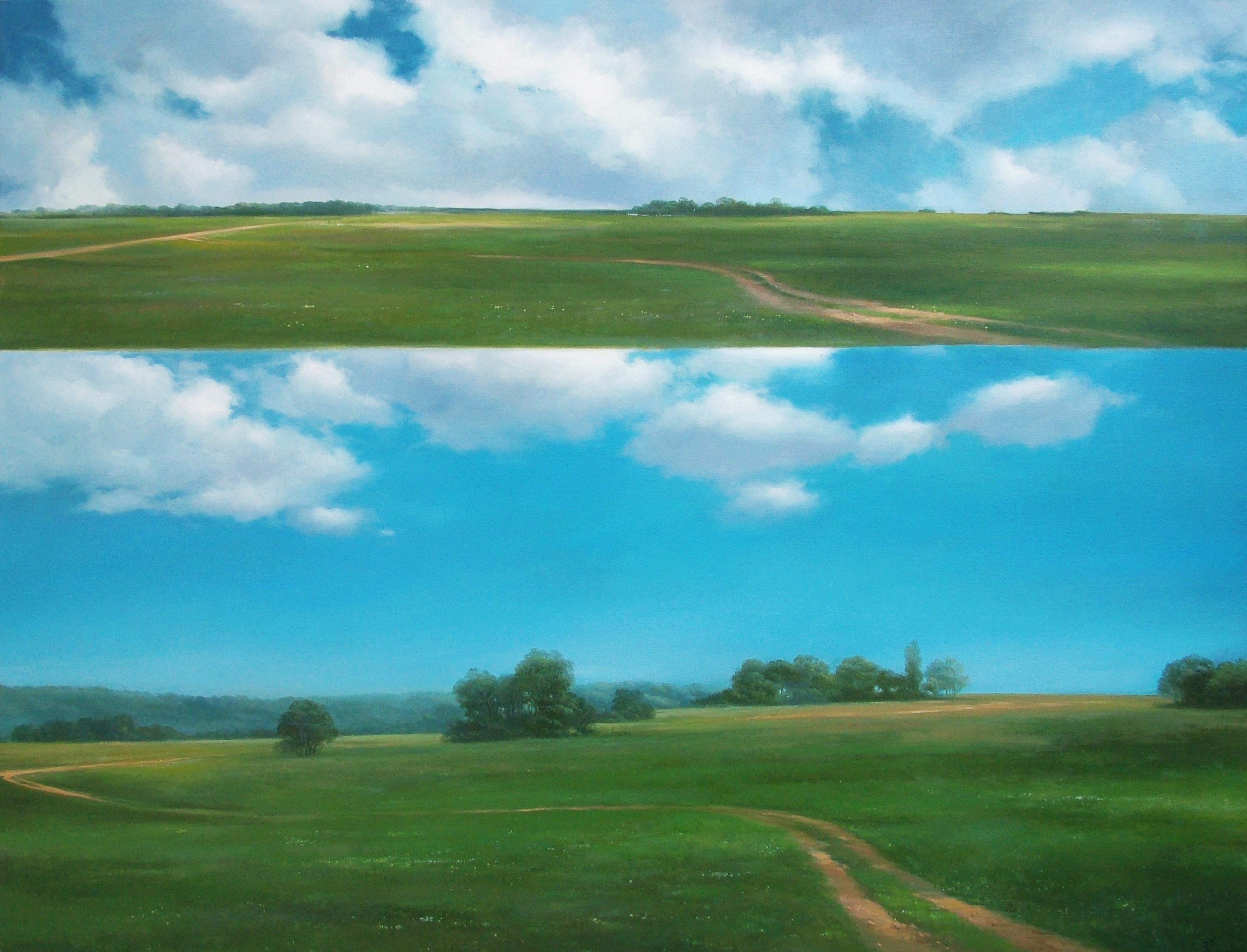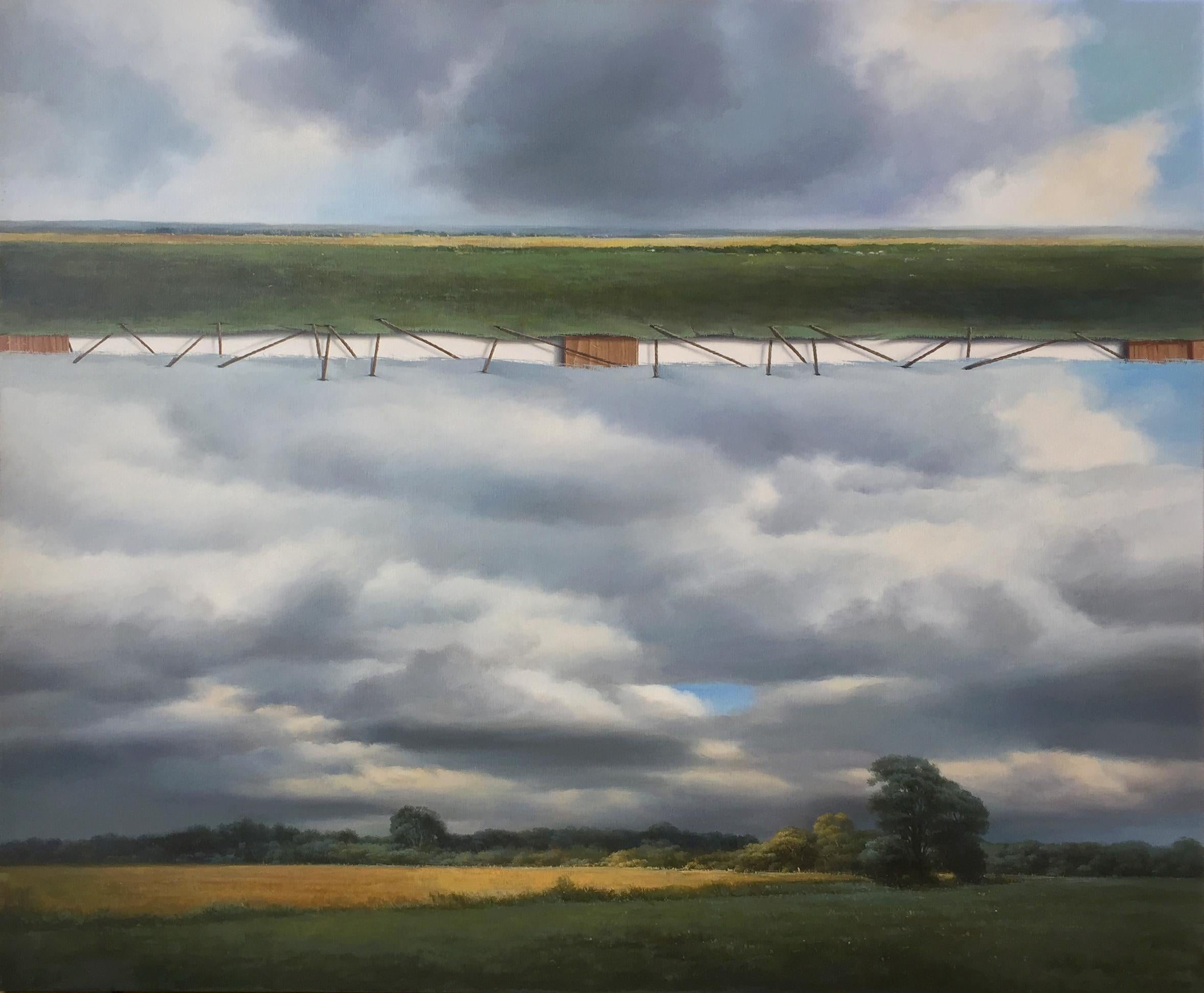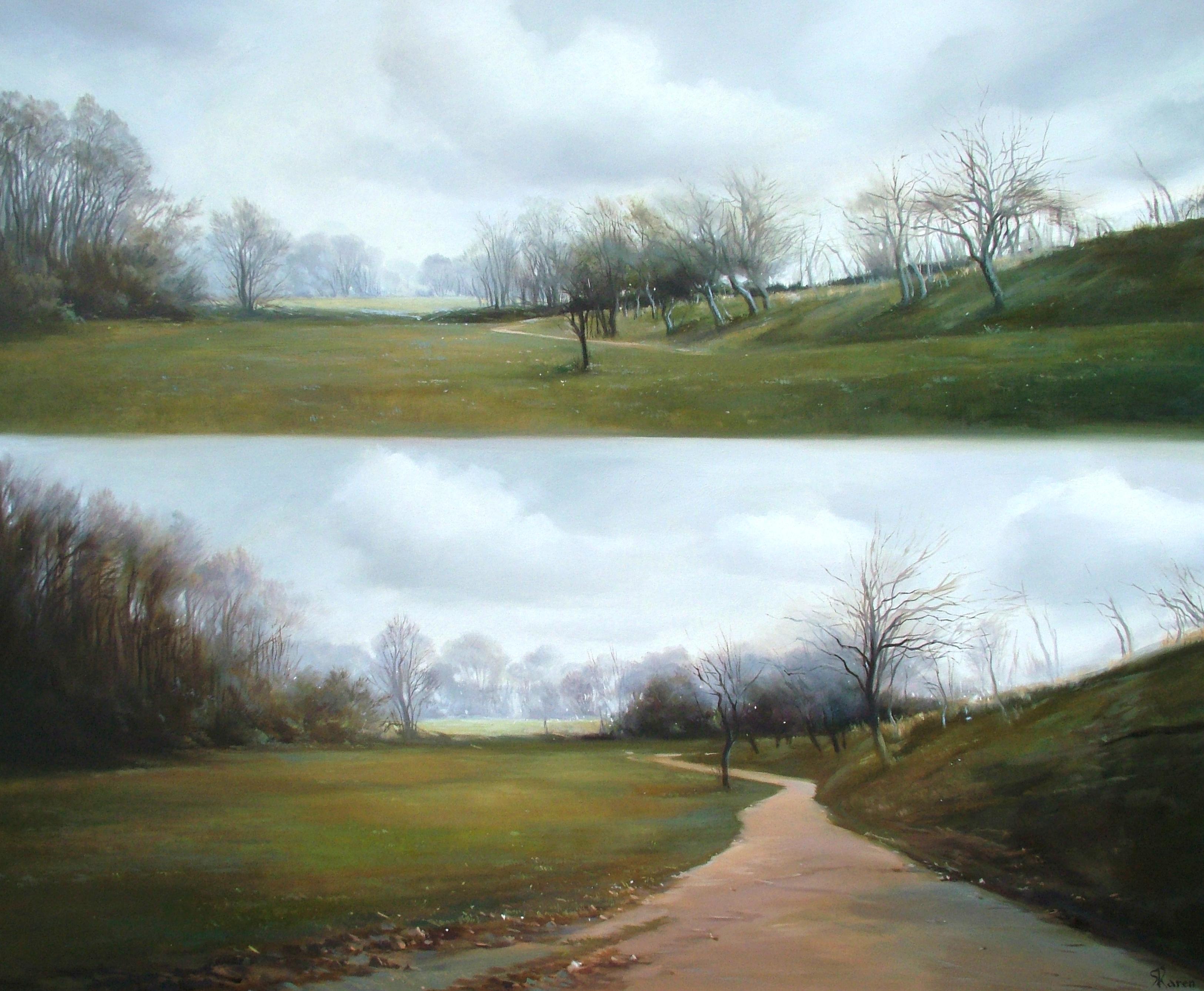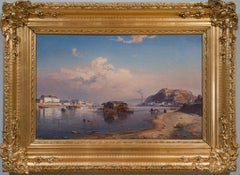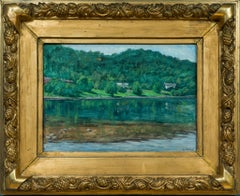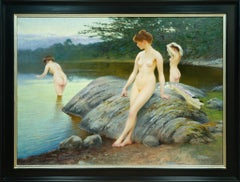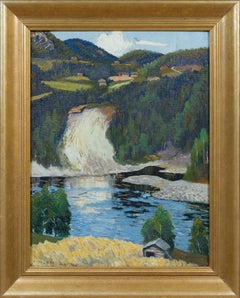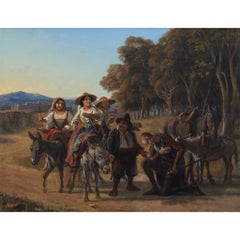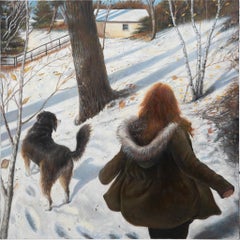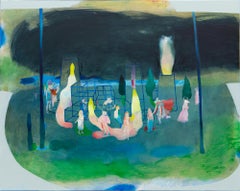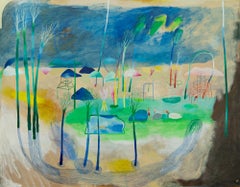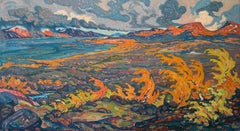
The Lapponian Gate (Swedish: Lapporten) By Swedish Artist Åke Grundström
View Similar Items
Video Loading
Want more images or videos?
Request additional images or videos from the seller
1 of 11
Åke GrundströmThe Lapponian Gate (Swedish: Lapporten) By Swedish Artist Åke Grundström1958
1958
Price:$3,500
$4,596.14List Price
About the Item
- Creator:Åke Grundström (1912 - 1975, Swedish)
- Creation Year:1958
- Dimensions:Height: 21.66 in (55 cm)Width: 39.38 in (100 cm)
- Medium:
- Period:
- Condition:Very good condition, bright and clear colours. Ready to hang.
- Gallery Location:Stockholm, SE
- Reference Number:1stDibs: LU144529933602
About the Seller
5.0
Platinum Seller
Premium sellers with a 4.7+ rating and 24-hour response times
Established in 2020
1stDibs seller since 2020
185 sales on 1stDibs
Associations
International Confederation of Art and Antique Dealers' Associations
Authenticity Guarantee
In the unlikely event there’s an issue with an item’s authenticity, contact us within 1 year for a full refund. DetailsMoney-Back Guarantee
If your item is not as described, is damaged in transit, or does not arrive, contact us within 7 days for a full refund. Details24-Hour Cancellation
You have a 24-hour grace period in which to reconsider your purchase, with no questions asked.Vetted Professional Sellers
Our world-class sellers must adhere to strict standards for service and quality, maintaining the integrity of our listings.Price-Match Guarantee
If you find that a seller listed the same item for a lower price elsewhere, we’ll match it.Trusted Global Delivery
Our best-in-class carrier network provides specialized shipping options worldwide, including custom delivery.More From This Seller
View AllRare Romantic Rhine Landscape by Karl Adloff (1855) – Now Available
Located in Stockholm, SE
Karl Adloff’s View of Koblenz from the Rhine towards the Fortress of Ehrenbreitstein (1855) is a luminous and atmospheric river scene that draws the viewer into a moment of stillness...
Category
1850s Realist Landscape Paintings
Materials
Canvas, Oil
Tranquil Reflections – Swedish Summer Landscape by Olof Arborelius
Located in Stockholm, SE
Olof Arborelius (1842-1915) Sweden
Landscape, likely from the Uddevalla area
oil on canvas
signed O.Arb.s
unframed: 25 x 35 cm (9 7/8 x 13 3/4 in)
framed: 43.5 x 53 cm (17 1/8 x 2...
Category
Early 20th Century Post-Impressionist Landscape Paintings
Materials
Canvas, Oil
$2,769 Sale Price
20% Off
Three Women by the Shore, Preparing to Bathe in the Morning Light
By August Hagborg
Located in Stockholm, SE
This luminous and finely executed painting by August Hagborg captures three nude women preparing to bathe at the edge of a still, tree-lined body of water. One figure is seated on a ...
Category
Early 20th Century Romantic Figurative Paintings
Materials
Canvas, Oil
$9,600 Sale Price
20% Off
Waterfall and Timber – A View from Norrland
Located in Stockholm, SE
Provenance: Acquired directly from Katarina Gunnarsson, who inherited the painting from her mother, Barbro, the daughter of the artist.
This striking landscape by Oscar Lycke depict...
Category
Early 20th Century Post-Impressionist Landscape Paintings
Materials
Canvas, Oil, Board
Children by the Ice Hole by Swedish Artist Bengt Nordenberg, c. 1846
Located in Stockholm, SE
This evocative winter scene by Bengt Nordenberg captures a quiet moment of everyday life: two children stand on the frozen edge of a river or lake, watching as their mother washes cl...
Category
19th Century Figurative Paintings
Materials
Canvas, Oil
A Scandinavian Landscape View by Swedish Artist Oscar Lycke, Large Size Painting
Located in Stockholm, SE
Oscar Lycke was a Swedish artist from Sundsvall. He is best known for his impressive colourful landscape paintings in a national romantic and realism styl...
Category
1920s Romantic Landscape Paintings
Materials
Canvas, Oil
$3,312 Sale Price
25% Off
You May Also Like
Don Quichote and Sacho pansa
Located in Greding, DE
Wilhelm Marstrand (1810-1873), Don Quichote und Sancho Pansa. Oil on canvas with a very nice frame: 45,5 x 57 cm.
Category
19th Century Figurative Paintings
Materials
Canvas, Oil
"The Whispers in the Shadows, " Oil on Canvas
By Bruno Surdo
Located in Chicago, IL
Chicago-based fine art painter Bruno A. Surdo is classically trained in drawing and oil painting in the tradition of Renaissance masters. With strong command of the human form, Surdo...
Category
21st Century and Contemporary Realist Landscape Paintings
Materials
Oil, Canvas
Incoherence of compulsory ways #1 - Hélène Duclos, Contemporary figurative paint
By Hélène Duclos
Located in Paris, FR
Oil on canvas
Signed lower right
Unique work
1 / Hélène DUCLOS, 2016 – Artist Statement
“Questioning the human condition and the position of being alive – What is it to be a living being? Who / what can we believe? Who / what can we trust? How real is our view of the world? And how is that perspective angled, and ultimately limited? These are the issues at the heart of my work as an artist.
Painting, drawing, engraving and embroidery give me the freedom to approach my subjects from an ambivalent and flexible standpoint. I am building up a dynamic body of work, like pieces that you can put together in one way or another to shape different structures, pierced with numerous openings. And the title that I give each piece acts as a possible clue as to how to enter inside that system.
I can portray both softness and monstrosities. I focus on the links and barriers lying between living beings and their surroundings, and evoke how permeable these connections are. My aim is not to create a visual documentary reporting fact, but rather immerse myself in observing everyday life, and in a host of images depicting real events (pictures, photos and videos). Instilled with these images, I can give a more personalized, unique and allegorical vision of the world around me.
I am also interested in the key transition periods of human existence, those turning points that forge our identity within a family, a group, and society as a whole at the heart of a specific environment. I centre on what makes up and creates cohesion (rituals, myths and tales….), and indeed the opposite - what leads to life becoming shattered, hindered and frustrated (moving populations, exile and migration…)
Amidst a landscape roaming with wild beasts and hybrid creatures, between love and separation, metaphors for our own desires and fears lie in hiding, or reveal themselves in the painted or embroidered spaces. Sometimes they are etched with lines, symbols and tiny architectural designs. These works might depict our inner landscapes, as if harking back to a primordial and cosmic point of origin.
My most recent collections recreate the images of bodies or landscapes using abstract zones and figurative details that have no direct link with either anatomy or geography. Intimacy and the unspeakable are themes that run throughout my work, and I make sure to incorporate areas of both visual tension and relief, so as to give the viewer the space to project him or herself into the work. And here, such paradoxes can only be reached through the interplay between abstraction and figuration.”
2 / Thierry Delcourt
Psychiatrist, psychoanalyst and author of works on the process of artistic creation, and the conditions of existential and social creativity :
"Entering into the world of Hélène Duclos in her drawings, paintings, embroidery and words means letting yourself be carried away by a torrent towards strange shores of creation where only a few artists have ever dared to venture. As if perched on a watchtower on the threshold of different worlds, Hélène Duclos throws us out of our depth, plunging us into spaces filled with destitute mankind, and guiding us through her stem-like maze of a scheme, bristling with roots and clues. But the mystery here, like a poetic, human rebus that never ends, only compels us to take a closer look.”
3 / Hélène Duclos ‘s biography :
After graduating from the Duperré School of Applied Arts in Paris with a degree in textile design, I set off on a six-month sea voyage from Vannes in Brittany, to Dakar. On returning to France, I set up my atelier...
Category
2010s Contemporary Landscape Paintings
Materials
Canvas, Oil
Change of paradigm #3 - Hélène Duclos, 21st Century, Contemporary figurative
By Hélène Duclos
Located in Paris, FR
Oil on canvas
Signed lower right
Unique work
1 / Hélène DUCLOS, 2016 – Artist Statement
“Questioning the human condition and the position of being alive – What is it to be a living...
Category
21st Century and Contemporary Contemporary Landscape Paintings
Materials
Canvas, Oil
Arbitrary landscape cut-out #2 - Hélène Duclos, Contemporary figurative painting
By Hélène Duclos
Located in Paris, FR
Oil on canvas
Signed
Unique work
1 / Hélène DUCLOS, 2016 – Artist Statement
“Questioning the human condition and the position of being alive – What is i...
Category
2010s Contemporary Landscape Paintings
Materials
Canvas, Oil
Cylcic movement #1 - Hélène Duclos, 21st Century, Contemporary figurative paint
By Hélène Duclos
Located in Paris, FR
Oil on canvas
Signed lower right
Unique work
1 / Hélène DUCLOS, 2016 – Artist Statement
“Questioning the human condition and the position of being alive – What is it to be a living being? Who / what can we believe? Who / what can we trust? How real is our view of the world? And how is that perspective angled, and ultimately limited? These are the issues at the heart of my work as an artist.
Painting, drawing, engraving and embroidery give me the freedom to approach my subjects from an ambivalent and flexible standpoint. I am building up a dynamic body of work, like pieces that you can put together in one way or another to shape different structures, pierced with numerous openings. And the title that I give each piece acts as a possible clue as to how to enter inside that system.
I can portray both softness and monstrosities. I focus on the links and barriers lying between living beings and their surroundings, and evoke how permeable these connections are. My aim is not to create a visual documentary reporting fact, but rather immerse myself in observing everyday life, and in a host of images depicting real events (pictures, photos and videos). Instilled with these images, I can give a more personalized, unique and allegorical vision of the world around me.
I am also interested in the key transition periods of human existence, those turning points that forge our identity within a family, a group, and society as a whole at the heart of a specific environment. I centre on what makes up and creates cohesion (rituals, myths and tales….), and indeed the opposite - what leads to life becoming shattered, hindered and frustrated (moving populations, exile and migration…)
Amidst a landscape roaming with wild beasts and hybrid creatures, between love and separation, metaphors for our own desires and fears lie in hiding, or reveal themselves in the painted or embroidered spaces. Sometimes they are etched with lines, symbols and tiny architectural designs. These works might depict our inner landscapes, as if harking back to a primordial and cosmic point of origin.
My most recent collections recreate the images of bodies or landscapes using abstract zones and figurative details that have no direct link with either anatomy or geography. Intimacy and the unspeakable are themes that run throughout my work, and I make sure to incorporate areas of both visual tension and relief, so as to give the viewer the space to project him or herself into the work. And here, such paradoxes can only be reached through the interplay between abstraction and figuration.”
2 / Thierry Delcourt
Psychiatrist, psychoanalyst and author of works on the process of artistic creation, and the conditions of existential and social creativity :
"Entering into the world of Hélène Duclos in her drawings, paintings, embroidery and words means letting yourself be carried away by a torrent towards strange shores of creation where only a few artists have ever dared to venture. As if perched on a watchtower on the threshold of different worlds, Hélène Duclos throws us out of our depth, plunging us into spaces filled with destitute mankind, and guiding us through her stem-like maze of a scheme, bristling with roots and clues. But the mystery here, like a poetic, human rebus that never ends, only compels us to take a closer look.”
3 / Hélène Duclos ‘s biography :
After graduating from the Duperré School of Applied Arts in Paris with a degree in textile design, I set off on a six-month sea voyage from Vannes in Brittany, to Dakar. On returning to France, I set up my atelier...
Category
21st Century and Contemporary Contemporary Landscape Paintings
Materials
Canvas, Oil
